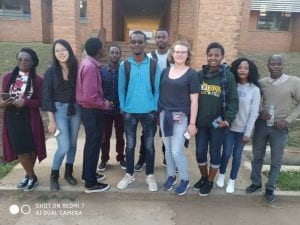June 10th (Monday): The Bumpy Road to Implementation
This was my first day working in the Rice 360 CPAP Office! The Appropriate Design for Global Health (GLHT 360) course drilled in my head that the engineering design process is long and arduous, especially the implementation phase and even more so in the field of global health. However, I don’t think I truly conceptualized exactly how long and arduous this process is until today when reading previous monitoring reports for the implementation of the PUMANI bCPAP device, considered one of the most established Rice 360 technologies.
So I was surprised when I read that some hospitals were still (or as recently as 2017—the most recent report I saw) hesitant to begin using the devices after being given them and that every once in a while, for a couple of hospitals, the CPAP mortality rate increased instead of decreased between quarters or between the same quarter in multiple years. That’s not to say there haven’t been major improvements in CPAP adoption (there have—more nurses allocated to the nursery wing, more reliable backup generators, etc), and obviously I don’t have the full scope of information about CPAP implementation. Nevertheless, I was so surprised by how challenging the implementation process still is despite the long journey its already taken, and I think I finally began to grasp what it what actually take to turn any of the projects we worked on to a device that could reach its full potential for social impact.
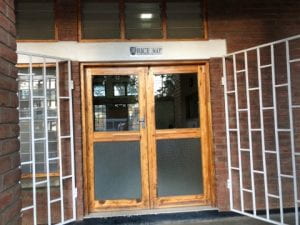
June 11th (Tuesday): What About the Glucometers?
At the CPAP office today, I worked on entering information from a set of forms regarding the conditions of nursery wards in various hospitals throughout the country into an excel spreadsheet. To further explain, national supervisors (selected clinicians from other parts of the country) visit other hospitals and report on various aspects of the nursery ward to help them make improvements. One of the sections in Essential Equipment and Supplies (EES), and the list of supplies included lots of things I was somewhat familiar with—phototherapy lights, CPAP machines, radiant warmers, etc—but also a device I did not expect at all: glucometers. I was puzzled—I had always associated glucometers with the monitoring and treatment of diabetes not neonatal care. So what were they doing on the list of EES? Furthermore, I remembered reading some monitoring reports listing the lack of glucometers as a primary challenge in the neonatal ward of many hospitals.
Later this evening, out of curiosity, I did a little research online on the use of glucometers in neonatal contexts and found some interesting information: Hypoglycemia (low blood sugar) is a major issue for neonates, especially for those with low birthweight (affecting 45% of neonates in the NICU according to one review). And glucometers are more adapted to use in adults with diabetes than neonates with hypoglycemia but are commonly used to make clinical decisions since other methods of glucose detection either take too long (laboratory methods) or are too invasive for infants (continuous monitoring). I think a low cost method for glucose level detection in infants could be a possible project idea to bring back to Rice 360 (though I suspect it may have already been proposed in the past) and will definitely look into it further this summer as we get more opportunities to talk to doctors and nurses here!
(Source: Woo, Hyung & Tolosa, Leah & El-Metwally, Dina & Viscardi, Rose. (2013). Glucose monitoring in neonates: Need for accurate and non-invasive methods. Archives of disease in childhood. Fetal and neonatal edition. 99. 10.1136/archdischild-2013-304682.)
June 12th (Wednesday): New Perspectives, Old Project
I went with the Polytechnic interns to do a site visit at the Zomba Central Hospital today. As I mentioned in a previous blog, one of the projects that the interns at Poly are working on this summer is the continuation and extension of the Ballard Score training model, and I unofficially became part of the team that is continuing that project! We spoke to nurses in the neonatal and maternity ward of the hospital, and we learned lots of unexpected information. It was super interesting to basically repeat the interview portion of the research process my team did at the beginning of the GLHT 360 course but from an entirely different perspective. During the semester, almost all of the information we received was from a clinician’s perspective and mostly from a clinician in a very high resource setting at that.
We found out that while we had previously had been given the impression that only clinicians were trained in the Ballard Score and, in the U.S., actual familiarity with it was generally limited to clinicians in relevant specializations (neonatology, pediatrics, etc), all of the nurses we spoke to at Zomba told us they learned about in nursing school. (Though it seems that only the nursery ward doctors actually used it—well, only parts of it due to its time intensiveness.)
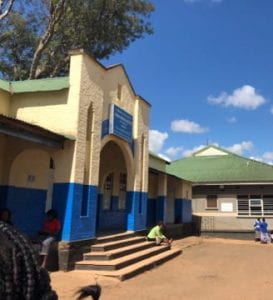
June 13th (Thursday): More Perspectives and More Info
This was the second day of site visits (this time to Mulanje District Hospital) to ask questions about our projects, and it was every bit as informative as the first! I had a brief meeting with the new Ballard Score team, and we came up with a second set of questions based on the answers we received yesterday. One of the interesting discrepancies that came up was that while the nurses we spoke to in the neonatal ward at Zomba yesterday were familiar with the Ballard Score, the other half of the team that went to Mulanje yesterday were told by nurses that they had only vaguely heard of it.
I had originally cast it off as a matter of individual differences, but Rodrick—a member of our team who was a lot more familiar with the Malawi health system (he was previously a data clerk at a health center and has several friends in nursing school) brought it up that it might be a difference in the level of education that the nurses at the two hospitals receive. Since none of his friends, who were in diploma level programs for nursing, had never heard of the Ballard Score, he suspected that degree level nurses may be trained in it while diploma level students may not. Also, because there is only one nursing school in Malawi that offers a degree level program, he said it is very possible that all of those nurses were assigned to central hospitals such as Zomba.
When following up on this question with the nurses at Mulanje today, our suspicions were likely confirmed since the nurse we spoke to said none of the nurses there had been trained in the Ballard Score and had only heard it mentioned in passing by the clinicians. This is when I realized the importance of having individuals of different backgrounds on an engineering team and, in this case, having members who were familiar with the local context. If it weren’t for Rodrick, I don’t think we would have discovered this key fact that will no doubt influence since of our decisions.
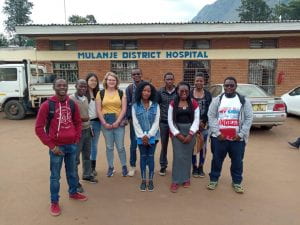
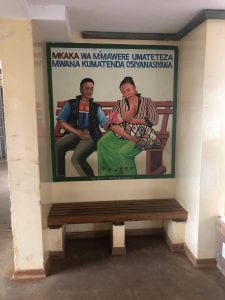
June 14th (Friday): Back to CPAP Office!
I finally was able to meet Sara, who will be my boss at the CPAP office, today and got a better perspective of what I will be doing for the next several weeks: helping with data entry and analysis for CPAP monitoring data, reading and helping with the qualitative reports, and maybe having the opportunity to observe in the Malaria Alert Center and/or Wellcome Trust Center (I’m really passionate about infectious diseases!) if everything works out.
I spent most of the day making charts to analyze the final diagnosis of neonates put on CPAP for the last quarter and the time of death for CPAP patients. It was super cool to put a little bit of the information I learned from my Statistics for Biosciences course last semester to use on actual data (though the statistical program the CPAP office uses and the one I learned are different—definitely plan on learning a little bit of Stata.)
Overall, this week has been filled with amazing opportunities to see and apply to the lessons—practical and technical—I’ve learned to the real world. It’s one thing to learn about the importance of implementation, different perspectives, and diverse collaborations through textbooks and readings and another to see this unfold before my eyes.
More Fun Photos from this Week:
